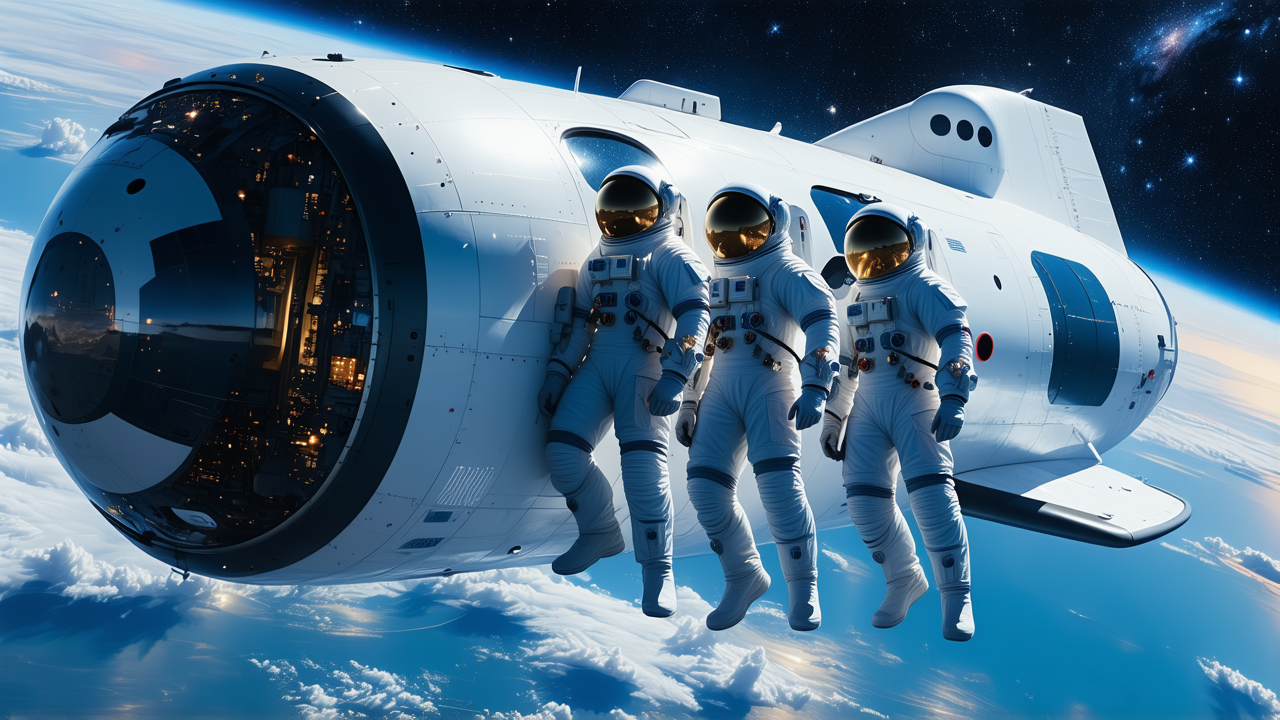Crew Dragon Successfully Delivers Four New Astronauts to the International Space Station
Crew Dragon Successfully Delivers Four New Astronauts to the International Space Station
In a smooth and successful docking operation, SpaceX's Crew Dragon capsule, named Endeavour, arrived at the International Space Station (ISS) on Saturday, delivering four new crew members to the orbital laboratory. This marks a significant milestone in the ongoing human presence on the ISS, which has now been continuously inhabited for nearly 25 years.
A Smooth and Precise Docking
The Crew Dragon capsule, carrying NASA astronauts Zena Cardman and Mike Fincke, Russian cosmonaut Oleg Platonov, and Japanese astronaut Kimiya Yui, began its journey to the ISS after a 16-hour rendezvous. Approaching from behind and below, the capsule maneuvered into position and performed a flawless docking at the forward Harmony module at 2:27 a.m. ET, orbiting 264 miles above the South Pacific Ocean.
After docking, hooks and latches engaged, firmly locking the capsule in place. Umbilical connections were automatically made, and flight controllers initiated a series of leak checks to ensure an airtight seal. The arrival was greeted warmly by the current Expedition 73 crew aboard the ISS, who welcomed the newcomers with cold drinks, hot food, and hugs.
A Historic Welcome Aboard the ISS
Approximately three hours after docking, the new crew members, wearing blue flight suits, floated through the hatch to join the Expedition 73 crew. The current crew, composed of NASA astronauts Jonny Kim, Nichole Ayers, and Anne McClain, along with Russian cosmonauts Takuya Onishi, Kirill Peskov, Alexey Zubritsky, and Sergey Ryzhikov, welcomed the newcomers with open arms.
“We are so happy to see your smiling faces,” said ISS commander Takuya Onishi. “Zena, Oleg, congratulations on your first spaceflight. We are looking forward to hearing your impressions and your feelings about that. Mike and Kimiya, welcome back. Your experience will be an invaluable asset for Expedition 73.”
Looking Ahead: Longer Stays and Funding Challenges
This mission brings the total number of crew members aboard the ISS to 11. However, with the arrival of Crew 11, four of the current crew members—Crew 10 commander Anne McClain, pilot Nichole Ayers, Takuya Onishi, and cosmonaut Kirill Peskov—will be set to return to Earth next Wednesday, concluding a 145-day mission.
The remaining three members of Expedition 73—Jonny Kim, Sergey Ryzhikov, and Alexey Zubritsky—will stay aboard with Crew 11 to continue the mission. This mission also marks a shift in crew duration strategies, as the Russians have begun to extend their missions to eight months, and NASA is considering doing the same for Crew 11.
This change in strategy is being driven in part by potential budget constraints, with the Trump administration's proposed fiscal 2026 budget reducing NASA funding by nearly 25%. This could lead to a decrease in the number of astronauts on each Crew Dragon mission, from four to three, to reduce the number of resupply missions and save costs.
“I can't wait to be in space, and two extra months would be a gift,” said Zena Cardman before launch. “Yes, we're baselined for six months right now, with the ability to extend that pending further analysis. For me, it would be an absolute privilege to stay for even longer.”
A New Era for Human Spaceflight
As the ISS continues to serve as a vital platform for scientific research and international collaboration, the arrival of Crew 11 underscores the importance of maintaining a continuous human presence in space. The mission also highlights the growing role of private companies like SpaceX in supporting human spaceflight, a trend that is expected to continue as NASA focuses more on long-term goals, including eventual crewed missions to Mars.
With the arrival of Crew 11, the ISS is poised for another year of groundbreaking research, exploration, and international cooperation in low Earth orbit.
